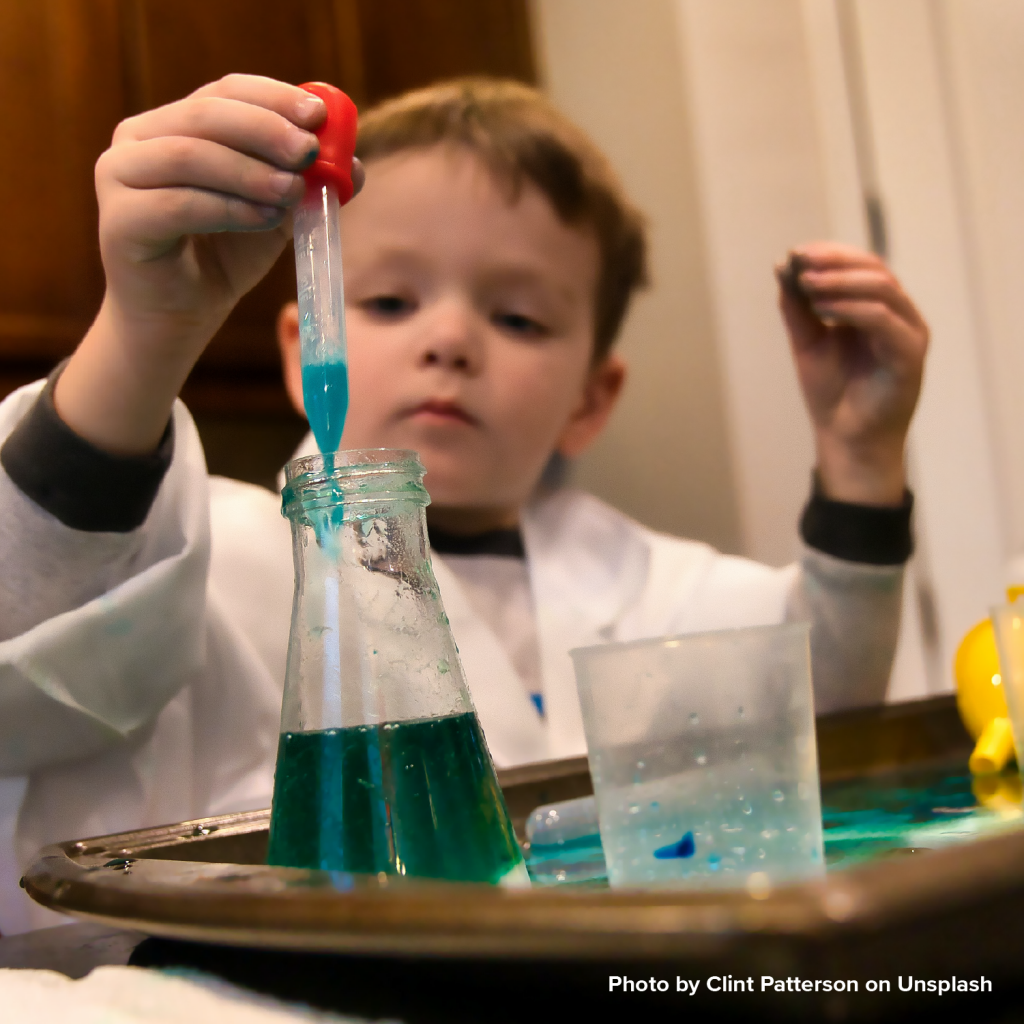All Science, All Fun!

Science experiments provide an incredible opportunity for children to engage in hands-on learning, explore the world around them, and develop critical thinking skills. As a parent, you can foster your child’s curiosity and love for science by guiding them through exciting experiments right at home. In this blog post, we will share a selection of captivating science experiments along with valuable resources for parents to enhance their children’s scientific journey.
Dancing Raisins:
- This simple experiment explores the principles of buoyancy and density. Fill a clear glass with sparkling water and drop a few raisins into it. Observe as the raisins “dance” up and down due to the release of carbon dioxide bubbles. This experiment is not only entertaining but also provides an excellent opportunity to discuss gas solubility and how it affects objects in liquids.
Egg in a Bottle:
- Demonstrate the power of air pressure with the classic “Egg in a Bottle” experiment. Place a peeled hard-boiled egg on the mouth of a glass bottle and watch as it gets sucked into the bottle after lighting a small piece of paper and quickly dropping it inside. The egg is pushed into the bottle as the flame consumes the oxygen, causing a drop in pressure. This experiment can spark discussions about air pressure, combustion, and the behavior of gases.
Rainbow Walking Water:
- This colorful experiment showcases capillary action and the process of water absorption in plants. Place three cups in a row and fill one with water and a few drops of food coloring. Leave the second cup empty and add a different color of food coloring to the third cup. Connect the cups with folded paper towels, allowing the colored water to travel from the full cup to the empty and partially fill the third cup, creating a vibrant “rainbow.” This experiment not only demonstrates the wonders of water absorption but also encourages discussions about plant biology and how water travels through stems.
Homemade Volcano:
- Ignite your child’s passion for geology and chemistry with a classic homemade volcano experiment. Build a volcano structure using clay or playdough around a small plastic bottle. Add baking soda and food coloring into the bottle, then pour vinegar inside, and watch as a foaming eruption occurs. This experiment showcases the reaction between an acid (vinegar) and a base (baking soda), producing carbon dioxide gas. Expand the learning experience by discussing different types of volcanoes and their formation.
Resources:
Here are some handy resources that parents can use to help spark their child’s curiosity or get new ideas of things to try at home!
Websites: Explore educational websites like Science Buddies (www.sciencebuddies.org) and Exploratorium (www.exploratorium.edu/education) for a wide range of experiment ideas categorized by age and topic.
YouTube Channels: Channels like “SciShow Kids” and “Sick Science!” offer entertaining and educational science experiment videos suitable for various age groups.
Books: Check out science experiment books such as “The 101 Coolest Simple Science Experiments” by Holly Homer and Rachel Miller or “Kitchen Science Lab for Kids” by Liz Lee Heinecke. These books provide step-by-step instructions and explanations for a multitude of experiments.
Local Science Centers: Visit your local science centers, museums, or planetariums that often offer hands-on exhibits and workshops specifically designed for children.
Science experiments are not only captivating for young minds but also serve as valuable learning opportunities. Engaging in hands-on exploration nurtures critical thinking, problem-solving skills, and a deep appreciation for the wonders of the natural world. By incorporating these experiments into your child’s learning routine, you can ignite their scientific curiosity and lay the foundation for a lifelong love of science. Remember to utilize the provided resources to enhance your child’s scientific journey and encourage their thirst for knowledge. Let the adventure begin!